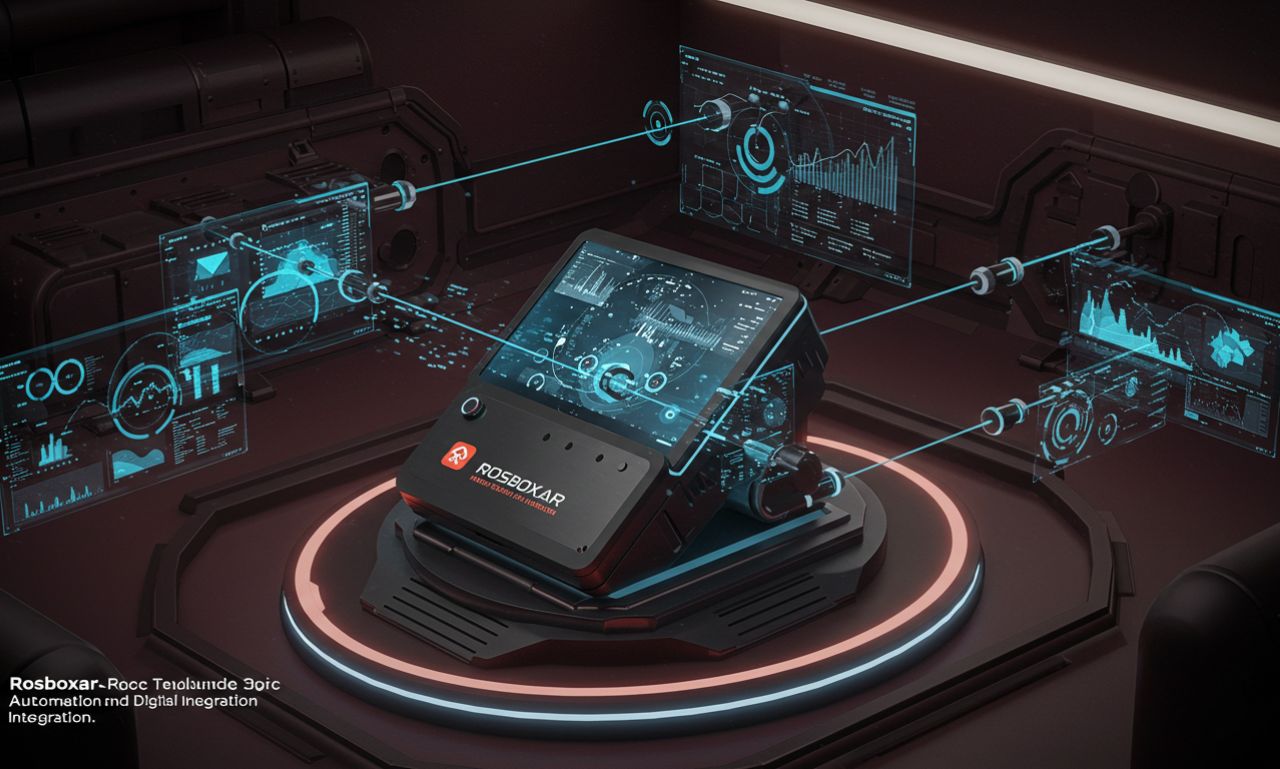In the fast-paced era of digital transformation, businesses are constantly searching for platforms that can simplify operations, integrate AI solutions, and automate workflows. One emerging name making waves in this field is Rosboxar. Known for its intelligent automation framework and adaptive data ecosystem, Rosboxar offers businesses the technological edge they need to stay competitive in a digital-first world.
This article provides a comprehensive overview of Rosboxar, its features, benefits, applications, and how it is reshaping the future of automation and digital intelligence.
What Is Rosboxar?
Rosboxar is a next-generation automation and data integration platform designed to help businesses streamline processes, manage data efficiently, and leverage artificial intelligence for decision-making.
It bridges the gap between manual operations and smart technology, allowing organizations to create intelligent workflows, automate repetitive tasks, and synchronize systems seamlessly.
Unlike traditional automation tools, Rosboxar integrates deep learning, cloud computing, and real-time analytics to enhance operational efficiency across industries.
Core Philosophy Behind Rosboxar
The concept of Rosboxar revolves around three key principles — innovation, automation, and integration. These principles define its operational approach and technological architecture:
-
Innovation:
Rosboxar continuously evolves, adapting to technological shifts and incorporating modern AI and IoT capabilities. -
Automation:
It replaces time-consuming manual work with efficient digital workflows. -
Integration:
The platform connects different tools, databases, and APIs, ensuring a smooth information flow across departments.
This trio of elements ensures that Rosboxar not only simplifies business operations but also enhances productivity and innovation.
Key Features of Rosboxar
Rosboxar stands out for its wide range of intelligent features that cater to both small businesses and large enterprises.
1. AI-Driven Workflow Automation
Rosboxar uses artificial intelligence to automate complex workflows. The platform learns from repetitive patterns, optimizes task execution, and reduces human error.
2. Data Integration Tools
Businesses often use multiple software systems that don’t communicate effectively. Rosboxar’s integration engine connects disparate systems, enabling real-time data sharing and analysis.
3. Cloud-Based Infrastructure
Built on a scalable cloud framework, Rosboxar ensures accessibility, security, and high performance for remote and hybrid workplaces.
4. Customizable Dashboards
Users can create personalized dashboards that display metrics, KPIs, and performance analytics, enabling data-driven decision-making.
5. Smart Analytics
With predictive analytics and machine learning models, Rosboxar helps businesses forecast trends, optimize resources, and enhance productivity.
6. Robotic Process Automation (RPA)
Rosboxar’s RPA tools automate repetitive business processes such as data entry, report generation, and customer support queries.
7. Advanced Security
Data protection is at the heart of Rosboxar’s infrastructure. It employs end-to-end encryption, multi-factor authentication, and compliance standards like GDPR and ISO.
How Rosboxar Works
Rosboxar operates through an interconnected system of modules that collectively manage data flow, task automation, and intelligent analytics.
Here’s a simplified breakdown of its functioning:
-
Input Collection:
Rosboxar gathers data from multiple sources — ERP systems, APIs, sensors, or cloud storage. -
Process Automation:
The platform automates predefined workflows, handling data transfers, notifications, and updates without human involvement. -
Machine Learning Layer:
Using AI models, Rosboxar analyzes data patterns, identifies inefficiencies, and suggests improvements. -
Output Delivery:
Final reports, notifications, or results are displayed on dashboards or exported to connected systems for further processing.
This streamlined structure ensures high operational efficiency and precision in all business processes.
Applications of Rosboxar Across Industries
The versatility of Rosboxar makes it suitable for multiple sectors. Below are some key industries where it is making an impact:
1. Manufacturing
Rosboxar automates production workflows, inventory tracking, and predictive maintenance, leading to reduced downtime and improved output.
2. Healthcare
In healthcare, Rosboxar assists in automating patient data management, billing, and compliance reporting — improving accuracy and patient care.
3. Finance
Financial institutions use Rosbo-xar for fraud detection, transaction monitoring, and real-time data analysis.
4. Retail and E-Commerce
Rosbo-xar enhances inventory management, order processing, and customer experience through automation and AI-driven insights.
5. Education
Educational institutions adopt Rosbo-xar to automate administrative tasks, online enrollment, and performance tracking.
6. Logistics
Rosb-oxar optimizes supply chain processes, from shipment tracking to warehouse management.
7. IT and Software Development
For tech companies, Rosbo-xar acts as an integration hub, connecting project management, testing, and deployment tools.
Benefits of Using Rosboxar
The power of Rosbo-xar lies in its measurable business benefits.
1. Increased Productivity
Automation saves time and allows employees to focus on strategic tasks instead of repetitive manual work.
2. Cost Efficiency
By reducing operational overhead and eliminating human error, Rosboxar cuts costs significantly.
3. Real-Time Decision Making
Integrated analytics help managers make faster and more informed decisions.
4. Scalability
The platform’s modular architecture allows businesses to expand capabilities as they grow.
5. Improved Data Accuracy
Automated data handling minimizes mistakes and ensures clean, consistent data.
6. Enhanced Collaboration
With shared dashboards and communication tools, Rosbo-xar promotes better teamwork within organizations.
7. Sustainability
By digitizing and optimizing operations, Rosbo-xar reduces paper waste and energy consumption.
Rosboxar vs Traditional Automation Tools
| Feature | Rosboxar | Traditional Tools |
|---|---|---|
| AI Integration | Built-in AI and ML models | Limited or manual setup |
| Scalability | Fully scalable via cloud | Often limited to local servers |
| Data Analytics | Real-time with predictive capabilities | Basic reporting only |
| User Interface | Modern, customizable | Static and outdated |
| Security | Advanced encryption and compliance | Basic password protection |
| Integration | Connects multiple APIs and systems | Requires third-party support |
This comparison highlights how Rosboxar outperforms legacy automation platforms by offering flexibility, intelligence, and integration.
Challenges and Limitations of Rosboxar
While Rosbo-xar offers immense advantages, users may face some challenges during initial adoption:
-
Learning Curve:
New users might need time to familiarize themselves with the interface and automation settings. -
Implementation Cost:
Initial setup and customization could be expensive for small businesses. -
Data Migration:
Transferring legacy data into Rosbo-xar’s system may require professional assistance.
However, these issues are typically short-term and are outweighed by the platform’s long-term benefits.
Future of Rosboxar
The future of Rosbo-xar looks promising as it continues to evolve with AI and IoT integration. The company’s roadmap includes features like:
-
Autonomous decision-making systems
-
Voice-command integration for hands-free control
-
Expanded IoT compatibility for smart factories
-
Blockchain-enabled data security
As technology advances, Rosbo-xar is expected to become a leading platform in digital transformation and automation.
Tips for Getting Started with Rosboxar
-
Define Your Goals:
Identify which processes you want to automate first. -
Start Small:
Begin with a pilot project to test Rosbo-xar’s functionality. -
Train Your Team:
Provide staff training to ensure smooth adoption. -
Integrate Gradually:
Add more modules as your business grows. -
Monitor Performance:
Use Rosboxar’s analytics to measure ROI and optimize workflows.
Conclusion
Rosbo-xar is more than just an automation platform — it’s a catalyst for digital transformation. By combining AI-driven automation, real-time analytics, and seamless integration, it empowers businesses to operate smarter, faster, and more efficiently.
From manufacturing to healthcare and finance, Rosbo-xar adapts to diverse industries, proving its versatility and technological strength. As organizations worldwide move toward automation, platforms like Rosbo-xar are redefining how work gets done in the digital age.

